What differentiates QUALITY Spices from Fake spices: ginger powder or how do you season your food?

When you stand near the supermarket shelf and choose a spice to buy, it is difficult to understand why the same spice originating from different manufacturers costs differently. Sometimes a spice may cost twice as much or less than other spices, that would seem to be the same. Few customers are aware that spices are different from each other. So what is the difference?
Today we will talk about ginger, popular and widely known spice used for cooking of meat dishes, vegetables, desserts and teas.
IT IS IMPORTATNT FOR YOU TO KNOW IT!
The content of natural essential oils (also known as volatile oils), which account for the taste and aroma, is of great significance for spices. High-quality dried ginger shall have at least 1% of essential oils in accordance with the requirements of ISO 1003: 2005 and not less than 1,5% of essential oils in accordance with the requirements of DSTU ISO 1003: 2005. The value of the ginger resides in essential oils, which add light bitterness, burning taste and a rich spicy aroma to the spice. Essential oils are highly concentrated in the pulp of the root. Thus, the quality of the ginger powder directly depends on the quality of the ginger root, from which it is made. The high-quality ginger is a root with large “fingers” (“sprouts”), which have a large pulp saturated with essential oils accounting for the taste and aroma of spices.
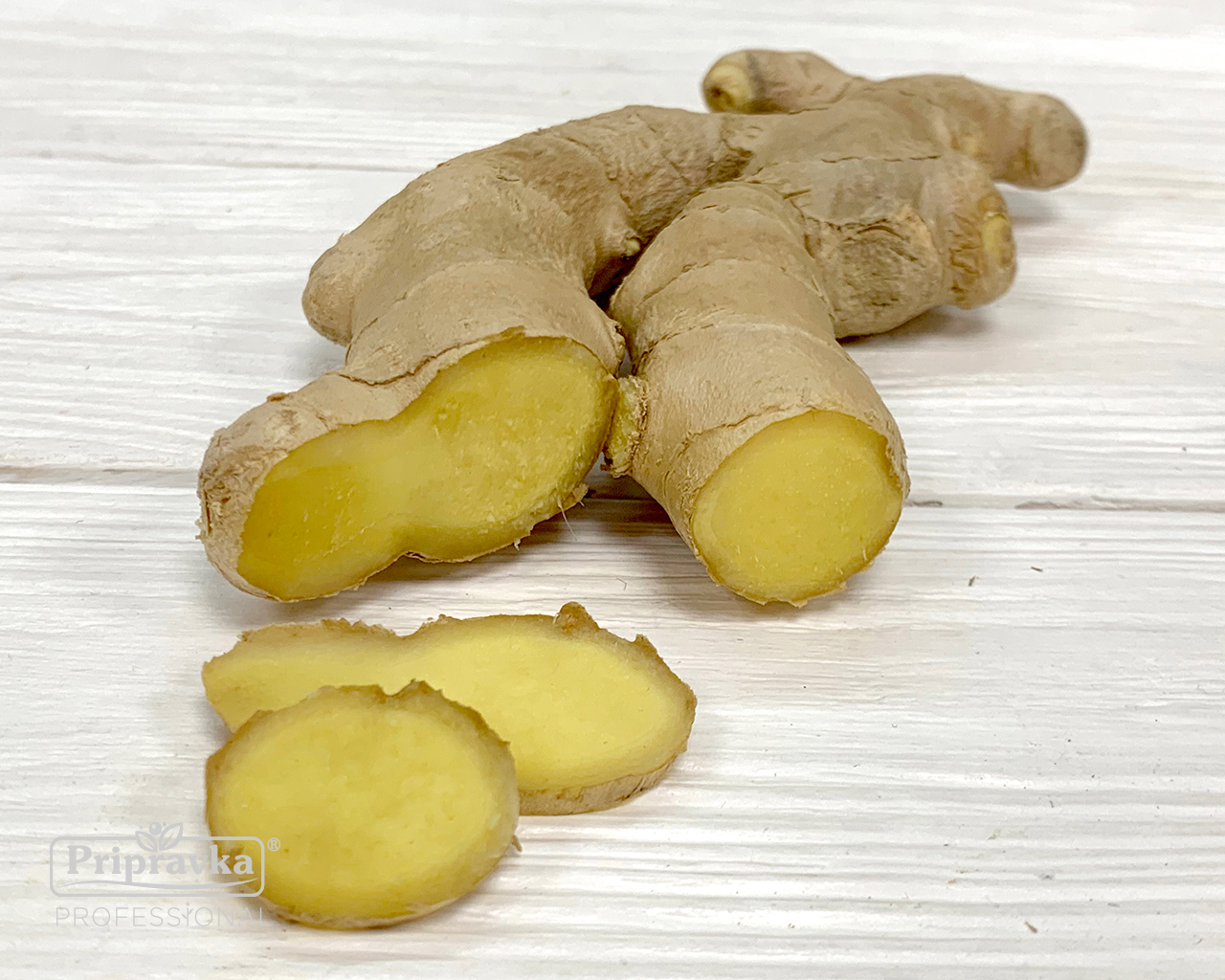
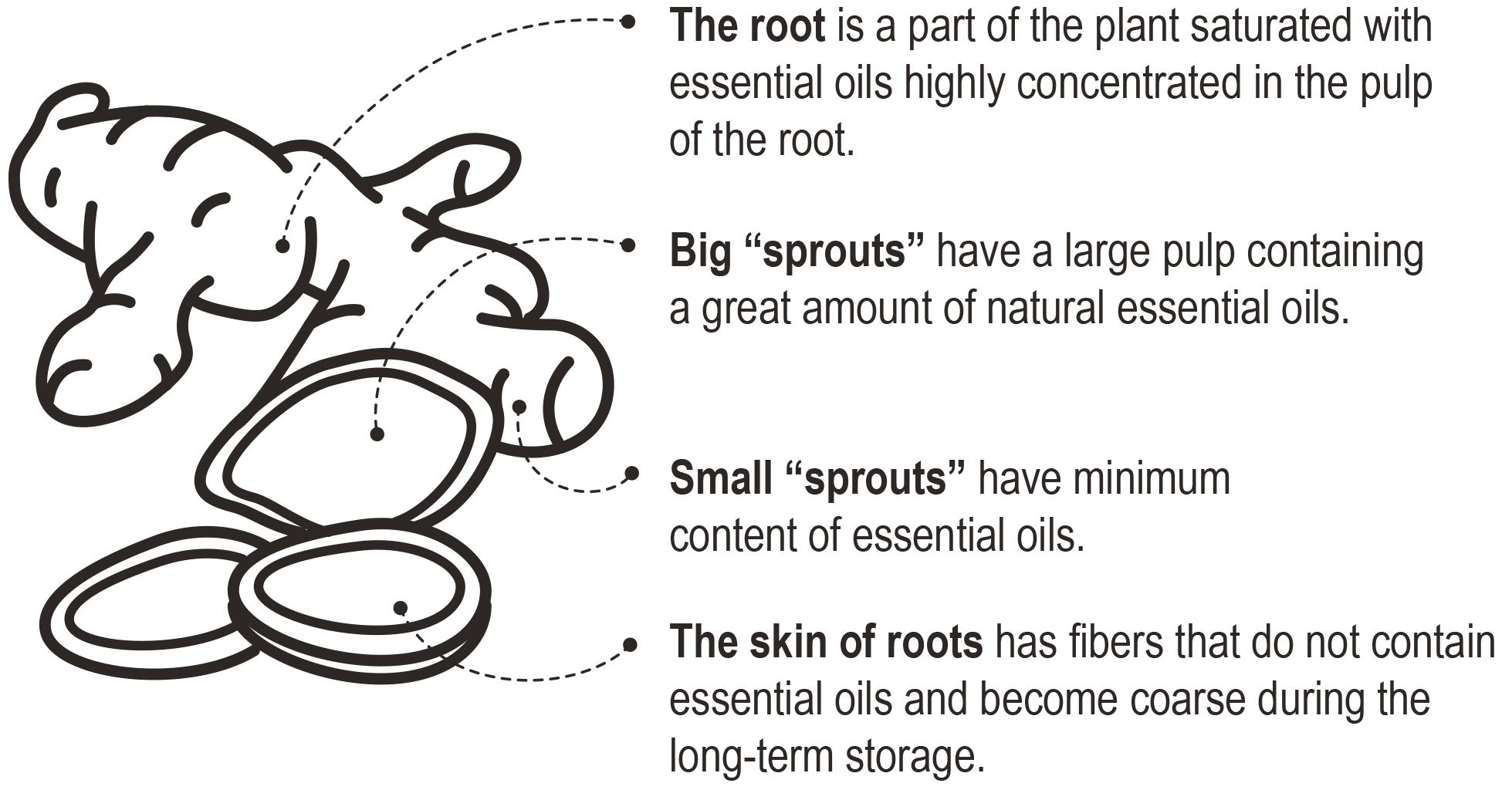 Each spice has a season, in which it is planted, grown and harvested. Ginger is harvested during the period from October to December. The highest content of essential oils is in fresh, freshly harvested roots. Over the course of time, the root deteriorates while storing. It is possible to make an analogy with harvesting of common potatoes, carrots and beet. We all know that all roots are sappy and fleshy after harvesting at the end of summer or in the beginning of autumn, but while storing they dry out, decay and lose nutrients. This is the case with the ginger root.
Each spice has a season, in which it is planted, grown and harvested. Ginger is harvested during the period from October to December. The highest content of essential oils is in fresh, freshly harvested roots. Over the course of time, the root deteriorates while storing. It is possible to make an analogy with harvesting of common potatoes, carrots and beet. We all know that all roots are sappy and fleshy after harvesting at the end of summer or in the beginning of autumn, but while storing they dry out, decay and lose nutrients. This is the case with the ginger root.
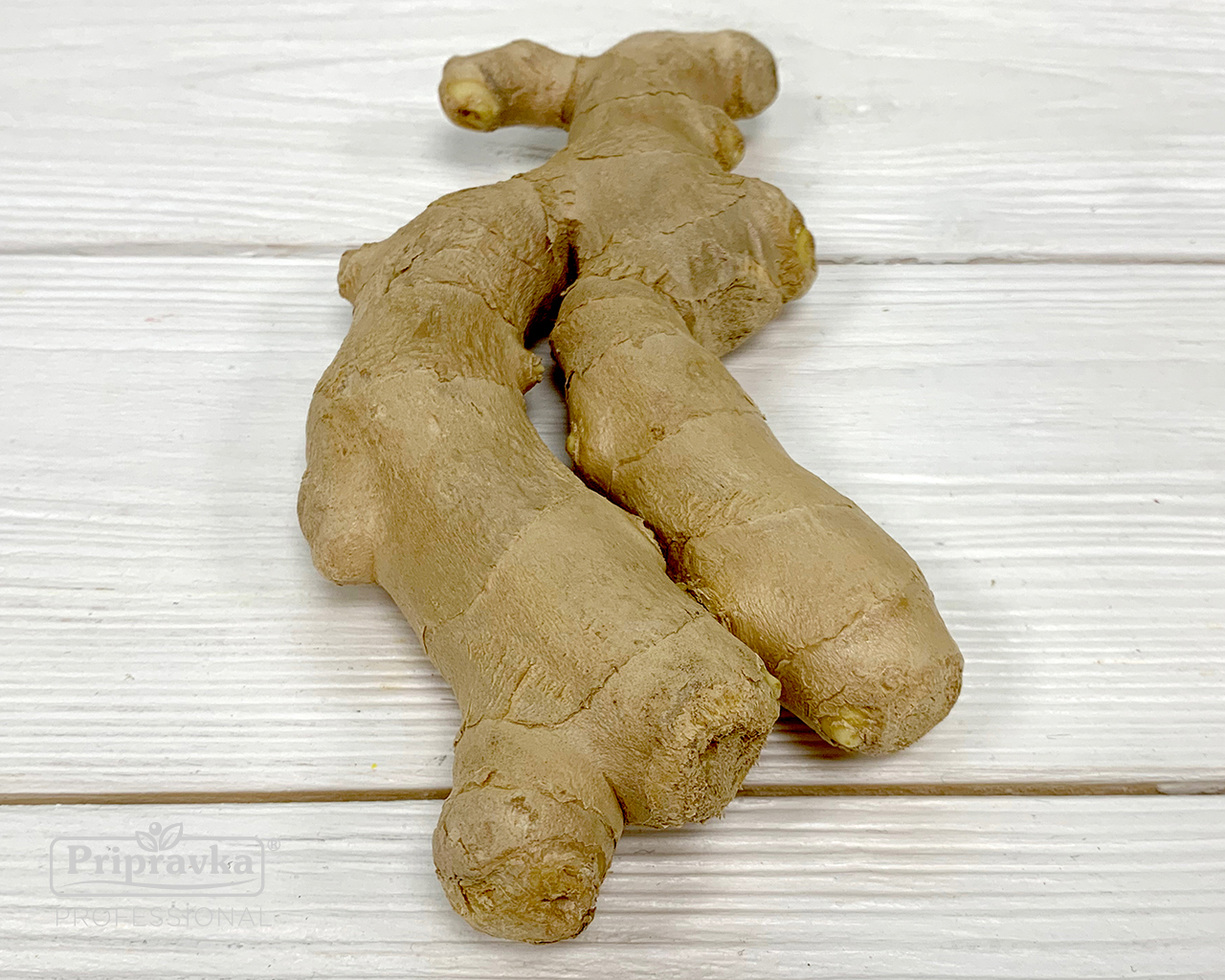 |
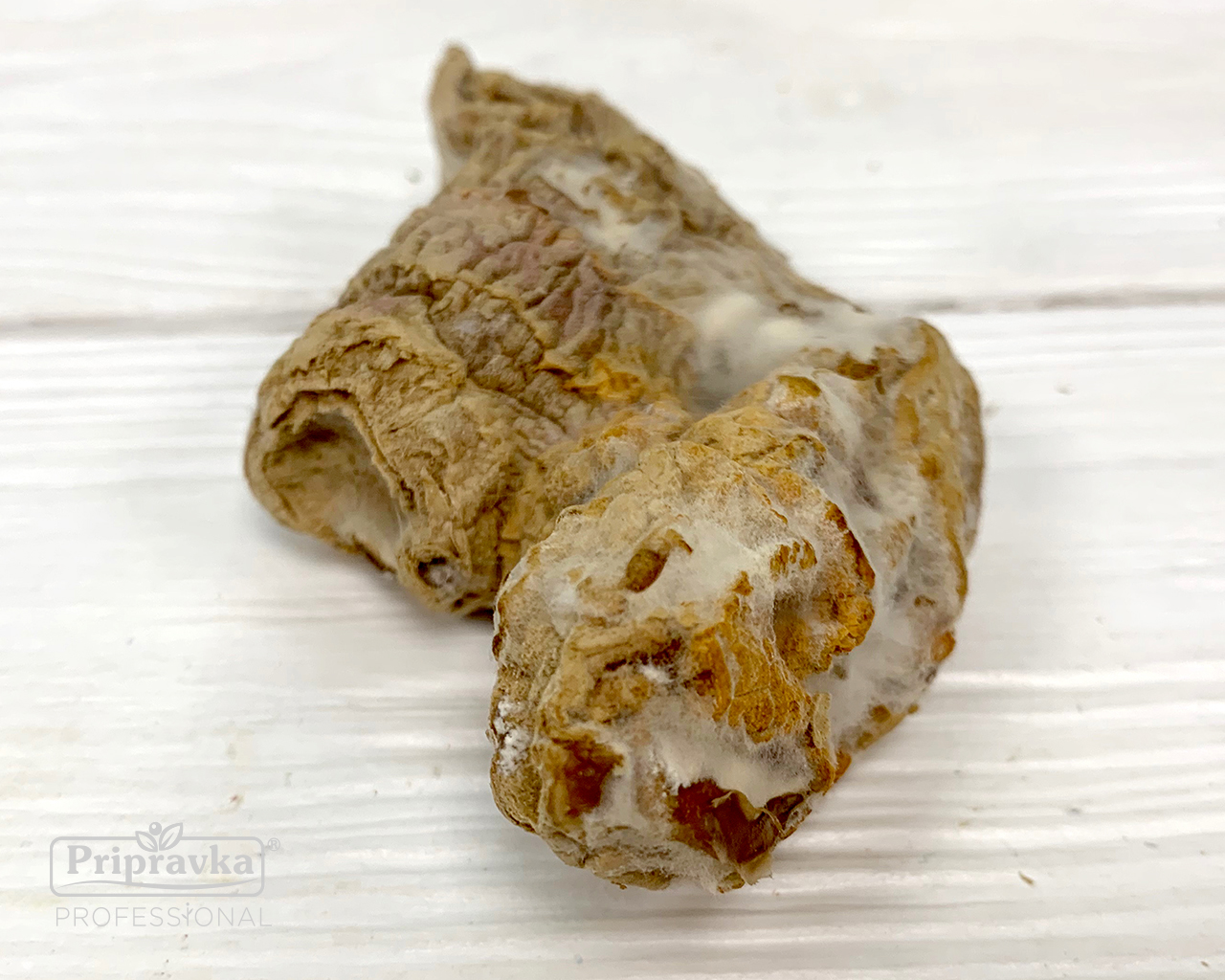 |
| PHOTO OF GINGER AT THE BEGINNING OF THE SEASON | PHOTO AT THE END OF THE SEASON |
WARNING! Cheap low-quality raw materials in seasonings pose hazard to life.
Like any other spice, the ginger powder is tested in laboratories on the basis of physical, chemical and microbiological parameters to monitor quality and food safety. Among the physical and chemical parameters, the following indicators hold much significance: weight fraction of essential oils, which account for the taste and aroma, weight fraction of total ash, the excess of which is indicative of the presence of impurities, and the weight fraction of sulfur dioxide, preservative, which affects human health at high doses. Control of microbiological parameters includes detection of Escherichia coli, molds and pathogenic microorganisms, among which Salmonella bacteria (genus Salmonella).
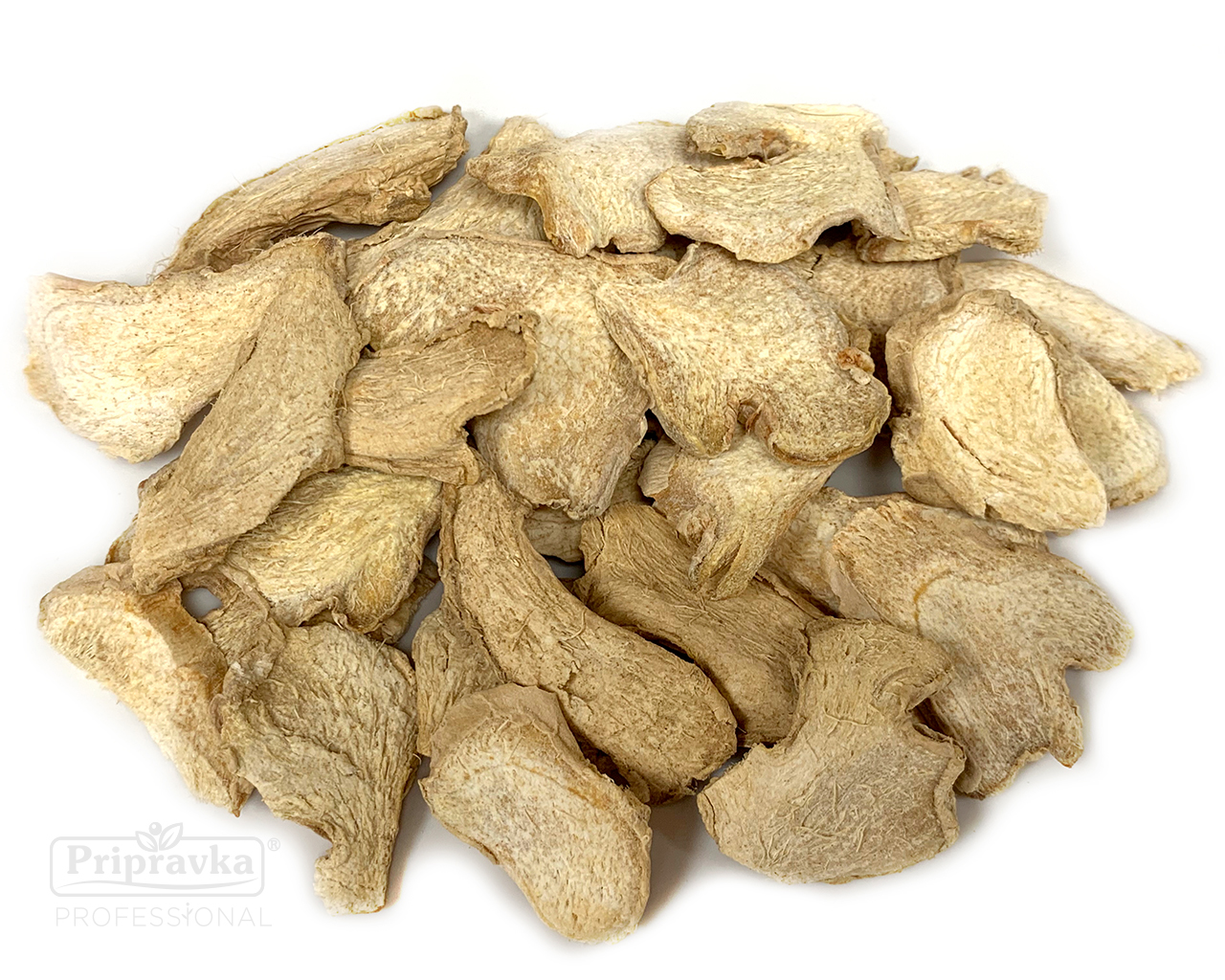 |
 |
| DRY, POOR-QUALITY, FIBROUS AND DAMAGED ROOT has minimum content of essential oils | HIGH-QUALITY DRIED GINGER ROOT has a large pulp containing a great amount of natural essential oils |
NATURAL GINGER POWDER should be light yellow in color without particles of coarse fibers.
 |
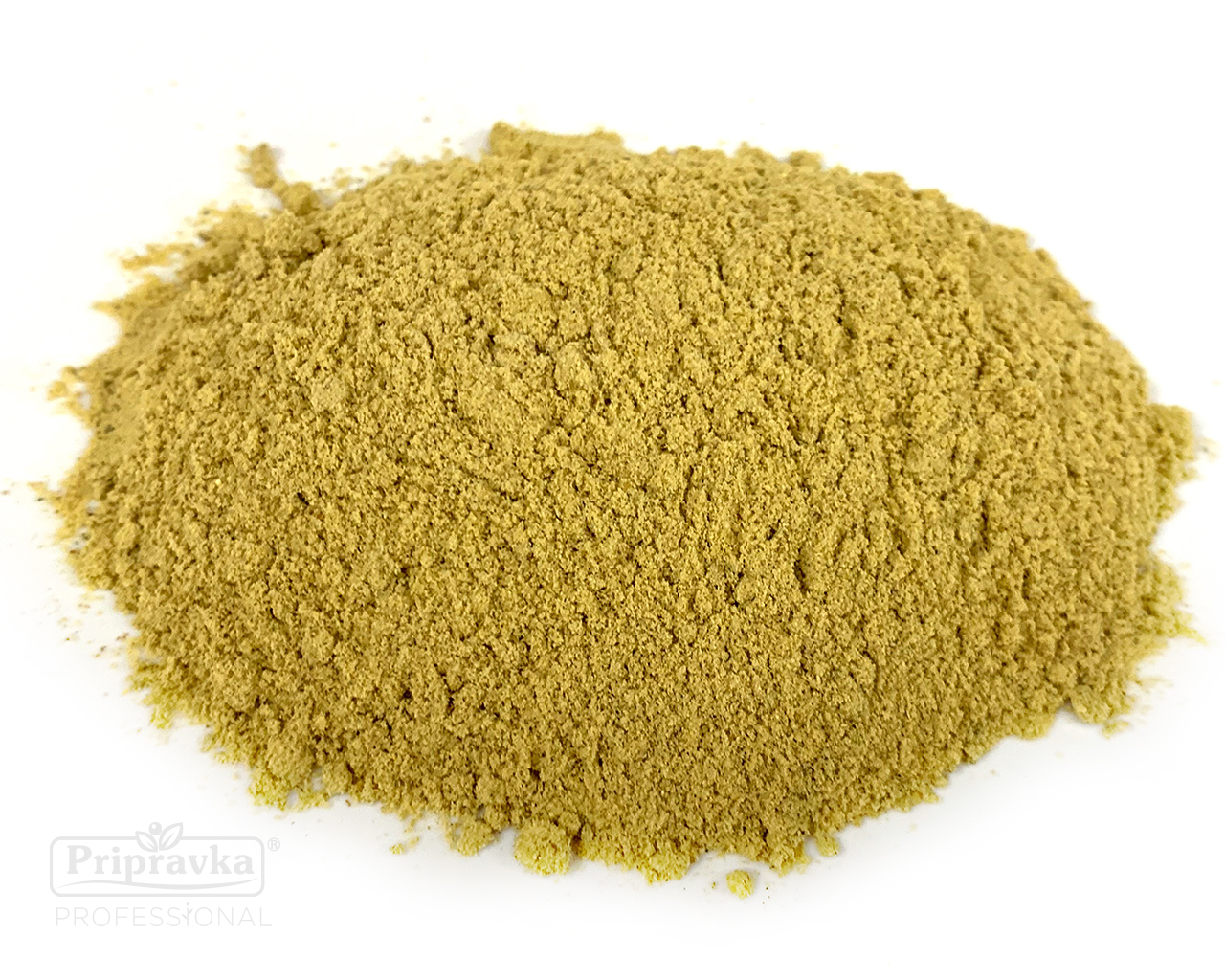 |
| PHOTO OF MILKED GINGER TM "Seasoning" | PHOTO OF SMOKING MILK GINGER |
RESEARCH OF QUALITY OF SPICES BY chief cooks
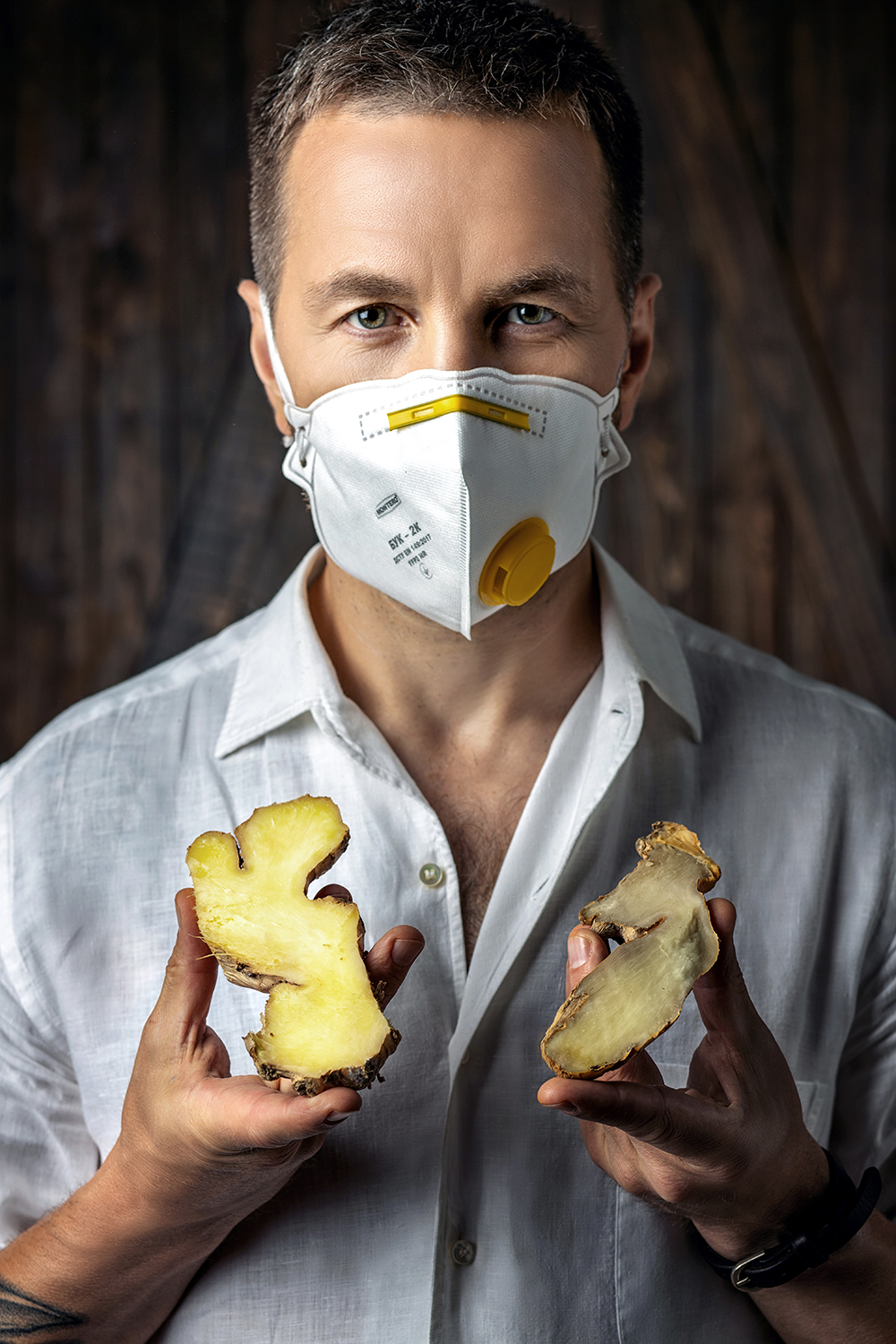 In 2018, with the launch of Professional series, TM “Pripravka” invited professional Ukrainian chief cooks to select the spices, which are the best in taste and quality, as well as raw material suppliers: brand chefs of the chain of restaurants, members of the “Ukrainian Chef Association”, “Western Chief Group” and “Ukrainian South Chef Association”. TM “Pripravka” provided each expert with a set of samples of spices originating from different suppliers. They needed to conduct a “blind test” for unbiased assessment of samples, having no notion of the manufacturers and country of origin of the raw materials. The chiefs assessed the main thing – organoleptic parameters (taste, aroma, color, presence of foreign impurities, etc.) and conducted their own tests to determine the best samples. They chose the best spices and herbs that they would use in their professional kitchens. The ginger powder was among the test samples. The best sample, which received the highest number of honourable mentions of chefs, and met the standards based on the laboratory research findings, was available in the Spice and Spice Professional Series.
In 2018, with the launch of Professional series, TM “Pripravka” invited professional Ukrainian chief cooks to select the spices, which are the best in taste and quality, as well as raw material suppliers: brand chefs of the chain of restaurants, members of the “Ukrainian Chef Association”, “Western Chief Group” and “Ukrainian South Chef Association”. TM “Pripravka” provided each expert with a set of samples of spices originating from different suppliers. They needed to conduct a “blind test” for unbiased assessment of samples, having no notion of the manufacturers and country of origin of the raw materials. The chiefs assessed the main thing – organoleptic parameters (taste, aroma, color, presence of foreign impurities, etc.) and conducted their own tests to determine the best samples. They chose the best spices and herbs that they would use in their professional kitchens. The ginger powder was among the test samples. The best sample, which received the highest number of honourable mentions of chefs, and met the standards based on the laboratory research findings, was available in the Spice and Spice Professional Series.
Ginger powder of TM “Pripravka” has excellent gustatory quality
The high-quality ginger powder of TM “Pripravka” is manufactured from dried roots of new crop, so that their skin does not have coarse fibers, which have a large pulp saturated with essential oils. The high-quality ginger powder of TM “Pripravka” contains 1.5% of essential oils in accordance with DSTU and ISO.
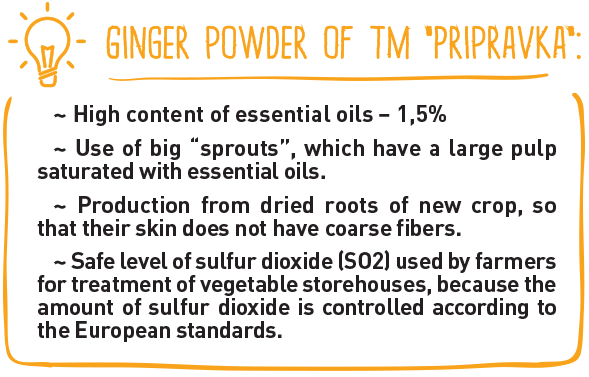 THE WAY HOW SULFUR DIOXIDE GETS INTO THE GINGER
THE WAY HOW SULFUR DIOXIDE GETS INTO THE GINGER
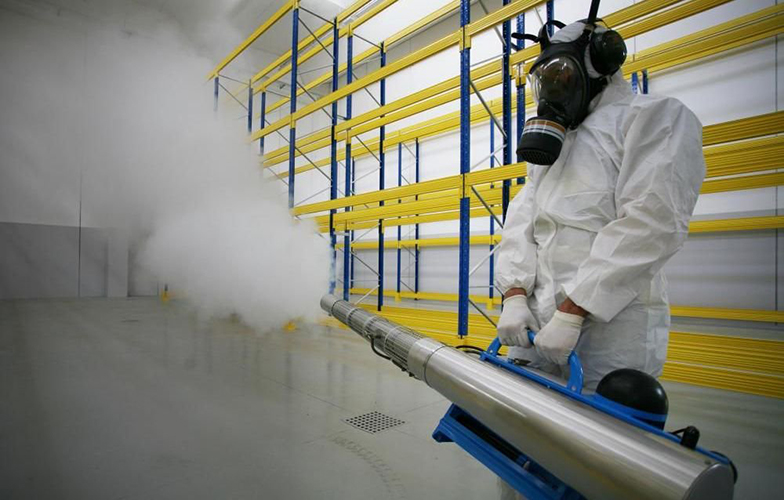
 In order to preserve the marketable condition of raw materials during long-term storage, farmers treat their vegetable storehouses with SO2 gas at high doses.
In order to preserve the marketable condition of raw materials during long-term storage, farmers treat their vegetable storehouses with SO2 gas at high doses.
Sulfur dioxide (SO2) is a toxic, colorless gas with a distinctive strong smell (the smell of a flaming match) used as a preservative agent.
Sulfur dioxide is a preservative agent that has an inhibitory effect on pathogenic microorganisms that cause food spoilage, prevents the development of oxidative processes in products and promotes the preservation of color and aromatic properties extending the shelf life of products.
Sulfur dioxide affects human health. First, sulfur dioxide destroys the thiamine (vitamin B1) in food, which plays an important role in the metabolism of carbohydrates, fats and proteins. Human storage of vitamin B1 is about 30 mg, with the greatest concentrations in skeletal muscles. Besides, thiamin is retained in major organs such as the liver, heart, brain and kidneys. Vitamin B1 is important for normal growth and development of the human body. It also helps maintain the proper functioning of the heart, nervous system and digestive system. The human body cannot synthesize thiamine and receives it with food.
Second, consumption of products with excessive amounts of sulfur dioxide (SO2) can cause an excess of toxic substances in the human body resulting in serious damage to the respiratory system, shortness of breath, nausea, headache, speech disorder and possible acute pulmonary edema.
In Europe, SO2 content in ginger is regulated by law. Its level should not exceed 10 ppb (according to EU Directive No. 2000/13). In Ukrainian legislation this indicator is not standardized.
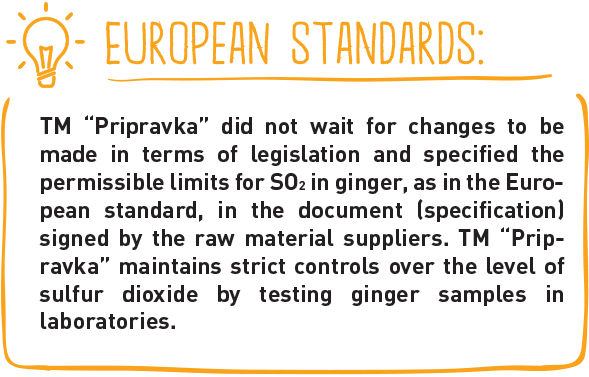 METHODS OF CHEAPENING AND FALSIFICATION OF GINGER POWDER
METHODS OF CHEAPENING AND FALSIFICATION OF GINGER POWDER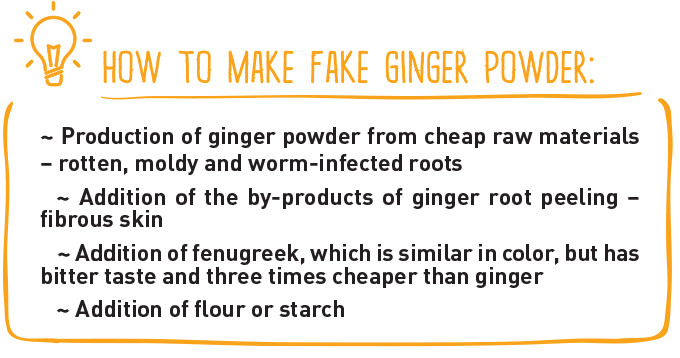
|
1. If the ginger powder has a light gray color of cold shades, then the unscrupulous manufacturer may have used poor-quality, mouldy, stale or rotten raw materials. |
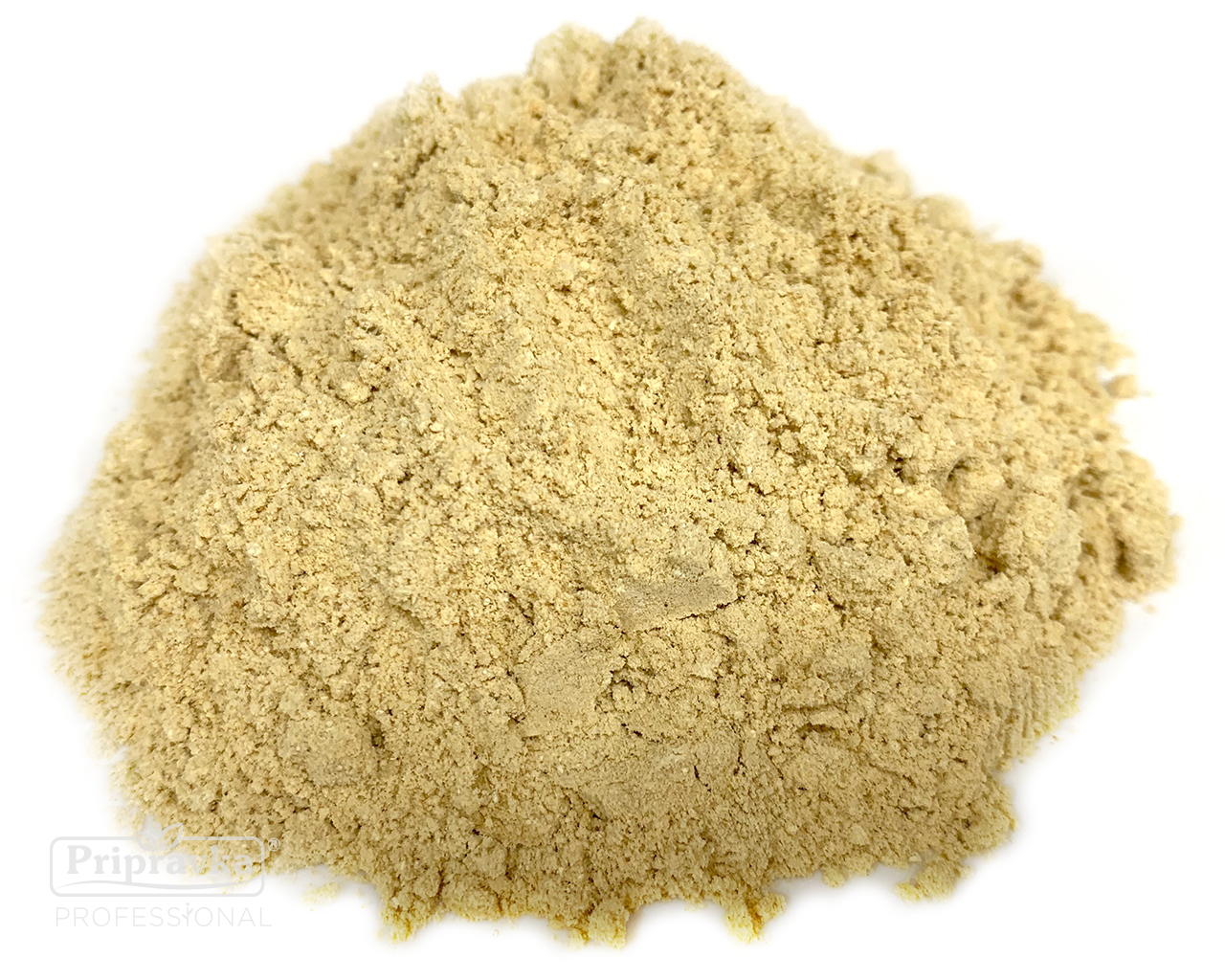 |
|
2. Dark inclusions and a generous amount of fibers is indicative of addition of the by-products of ginger root peeling, small dried root sprouts and old roots with coarse fibrous skin that does not contain essential oils. |
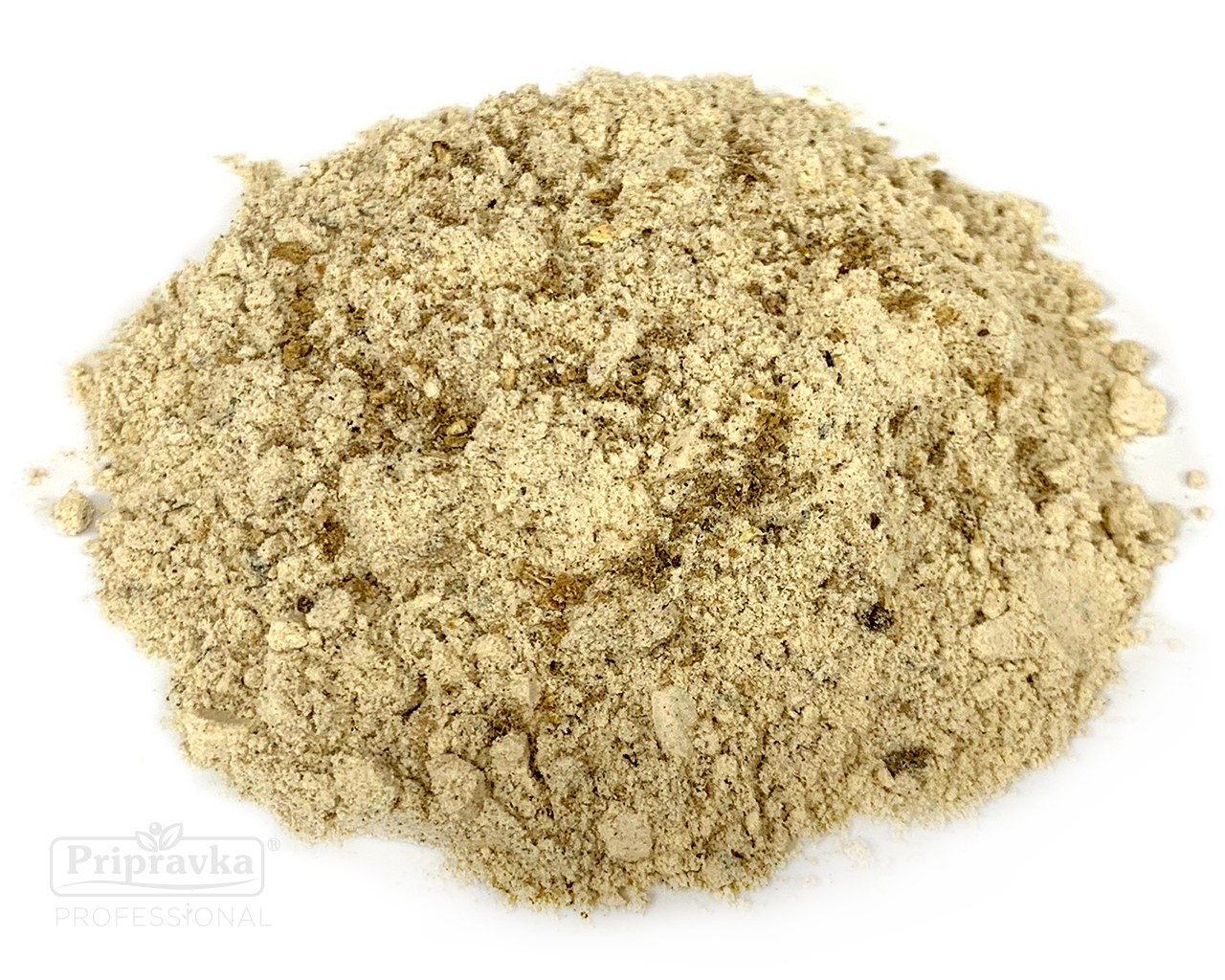 |
|
3. A whitish color is indicative of addition of starch or flour. |
 |
Blue melilot (Trigonella, fenugreek, methi leaf etc.) is an annual aromatic and spice plant of Fabaceae family with seeds of yellowish-brown color.
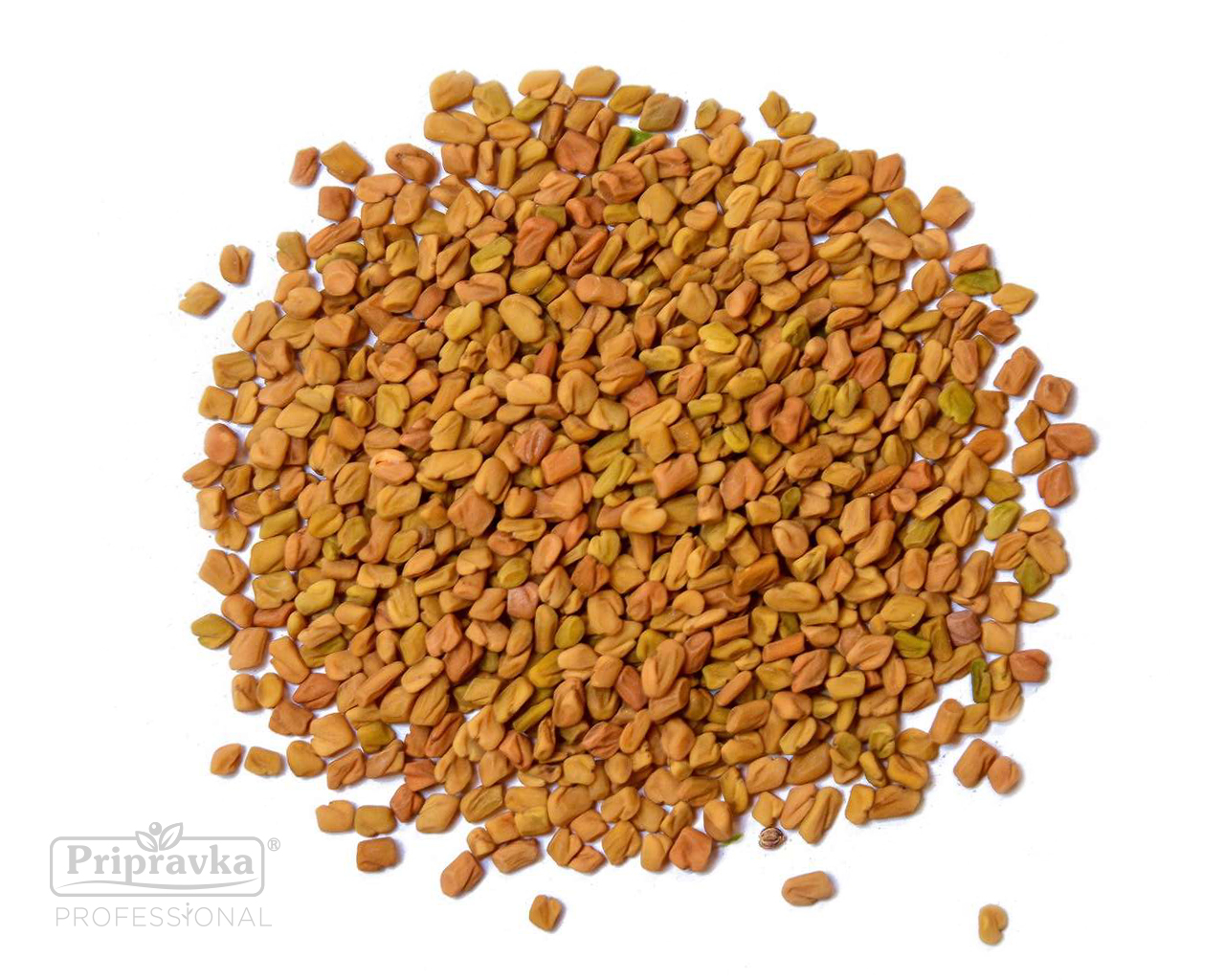 |
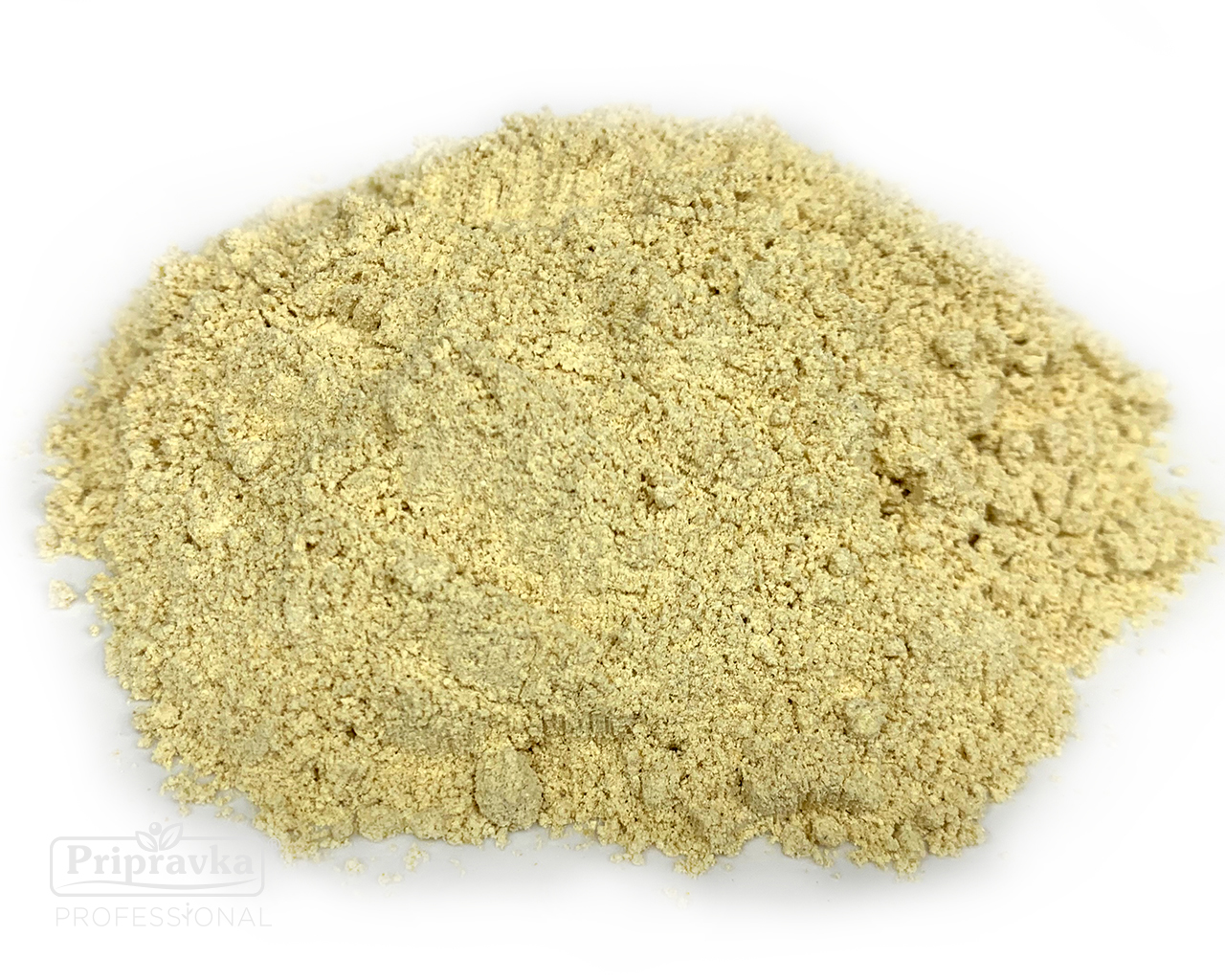 |
| Fenugreek Seeds | Fenugreek Ground |
Ground fenugreek seeds are light yellow in color and are not very different from ginger powder. If the ginger powder has abnormal bitter taste, then most likely unscrupulous manufacturers have added Blue melilot, which is three times cheaper than ginger.
HOW DO YOU SEASON YOUR FOOD?
To determine the quality of ginger at home, it is necessary to pour a thin layer of cracked ginger on a sheet of paper, press down with a clean sheet of paper and evaluate results:
- The presence of dark inclusions. It is indicative of the content of mineral and vegetable impurities and/or the presence of powdered stale and dry roots of ginger with a fibrous skin.
- Color and color saturation. High quality ginger powder retains a homogenous light yellow color.
- Taste and flavor. The taste of high quality ginger powder should be burning, but without bitter taste. A bitter flavour is indicative of the addition of blue melilot. Fresh, spicy flavor is an indicator of high quality ginger powder.
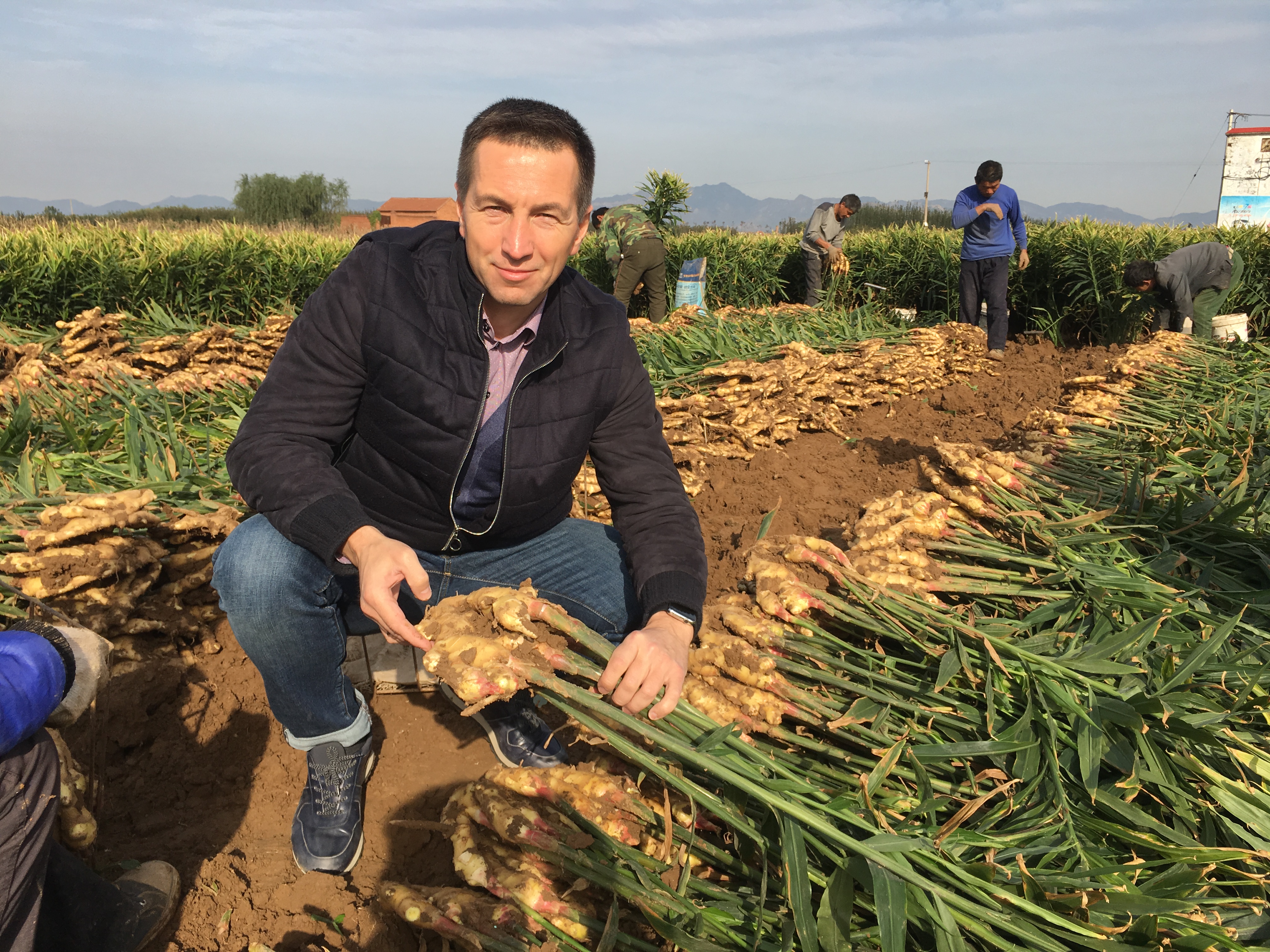
The new information obtained during the expedition is included in the documents regulating the quality of the ginger powder of TM “Pripravka”.
Cheap ginger fakes may contain:
- stones, clumps of earth and dust
- branches and garbage
- plastics and glass
- metal impurities
- dirt, insects and larvae
- animal excrement
- fibrous coat of the roots
- dangerous pathogenic microorganisms
GINGER POWDER of TM “PRIPRAVKA” undergoes 7 degrees of purification of raw materials:
- Rejection of a batch of raw materials that does not comply with food safety standards.
- Magnet – cleaning from the magnetic metal impurities
- Vibrating screen – cleaning to remove plastics, glass and garbage
- Destoner – separation of stones and clumps of earth
- Aspiration – removal of dust and insects
- Grinding – peeling of ginger root surface
- Metal detector – separation of nonmagnetic metal impurities
TM “PRIPRAVKA”. FOOD SAFETY IS GUARANTEED!
14 May 2019 Previous
Previous